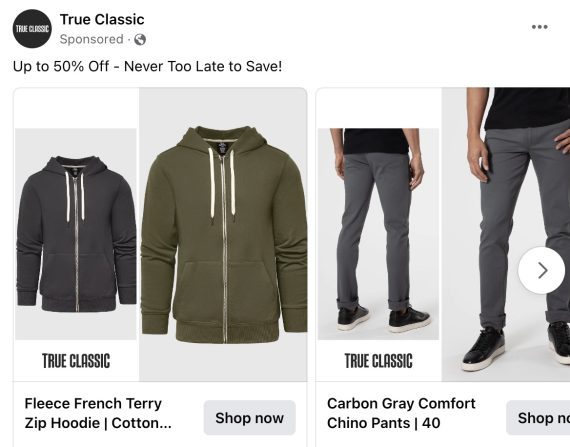Google Ads can capture demand from consumers searching for products, info, and more. A shopper searching for laptop cases will see a slew of choices in Search and Shopping ads. However, a weakness of Google Ads is generating demand.
Google’s Display Network is helpful with its audience and contextual targeting. But many advertisers prefer the extensive targeting capabilities of Facebook and LinkedIn. For example, LinkedIn can target by job titles. Moreover, ad formats and placements on the two social platforms tend to be cleaner. A Facebook ad shows within the feed as if it were a post.
Google Ads had responded. Its new Demand Gen campaigns, launched in June, “help advertisers who buy on social platforms find and convert consumers with immersive, relevant, and visual creatives that grab attention and spur action in the right moment.”
Demand Gen
Per Google, Demand Gen will replace Discovery campaigns. Demand Gen ads will appear on YouTube (including Shorts), Gmail, and the Discover app. Discovery campaign advertisers can switch to Demand Gen beginning next month.
Demand Gen advertisers can optimize for sales, but the emphasis is micro-conversions, such as email signups and page views. Google says Demand Gen campaigns appeal to social media advertisers in five ways:
- Expanded reach,
- Tailored ad experiences,
- Flexible bidding options,
- Reporting and measurement,
- Audiences.
Expanded reach
Appearing on YouTube Shorts is a key benefit of Demand Gen campaigns. Videos on Shorts are 60 seconds, vertical, and viewed 50 billion times daily per TechCrunch. Like Facebook and Instagram Reels, Shorts show ads as users scroll. The ads are in-feed and therefore not disruptive. The Shorts’ audience is a massive opportunity for advertisers.
Tailored ad experiences
Discovery campaigns show only image ads and product feeds. Demand Gen campaigns include those formats plus videos and carousels.
Bringing the carousel format to Google allows advertisers to showcase more products and themes. Like Responsive Display Ads, all Demand Gen formats reside in one campaign, optimized toward the campaign goal.

Carousel ads such as this example from Facebook help shoppers and advertisers. Shoppers can swipe to see more products, and advertisers can showcase more items in a single placement.
Flexible bidding options
I generally discourage a “maximize clicks” bid strategy. It focuses on clicks rather than conversions and depletes budgets sooner. But conversions aren’t always the main goal. An example is generating awareness for a new product wherein more clicks are ideal. Demand Gen campaigns include a “maximize clicks” bidding strategy unlike Discovery campaigns.
Reporting and measurement
Demand Gen campaigns offer better conversion-path reporting and attribution. Advertisers can track the impact of Demand Gen ads on sales, especially with conversion path reports. A common use of conversion path reports is gauging non-brand campaigns’ effect on brand conversions. A non-brand click may be the first touchpoint, while a brand click is the last.
Another benefit is the Brand Lift tool, which allows advertisers to track ad recall, brand awareness, and consideration. To determine brand lift, Google shows surveys before a video ad to users in the targeting group who have and have not seen the advertiser’s ads. The tool doesn’t track conversions but gives critical insight into brand retention.
Audiences
Demand Gen campaigns include lookalike segments. Advertisers can upload first-party data, and Google will find additional, relevant users to show ads. This feature resembles Google’s recently sunsetted “similar audiences.” The difference is lookalike segments include only first-party info.
First Steps
Demand Gen campaigns can appeal to social media advertisers. Updates will likely come as advertisers use this campaign type, but it’s a good start. Having ads native to feeds and offering more bid and audience options are helpful first steps.




